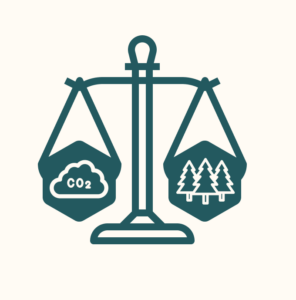CLIMATE CHANGE: A “MARKET FAILURE”
Climate change is a market failure because the costs and impacts of greenhouse gas emissions are not borne by those causing them (see for e.g the Stern Review on the Economics of Climate Change (2006)). It is widely acknowledged that those hardest hit by climate change are least responsible for it.
Key facts about the externalities of climate change include:
- It is global in its causes and consequences; Climate change has been linked to greater risks of zoonotic diseases. For some contagions, increases in temperatures or rainfall can dramatically affect the life cycles of either the pathogen or its vector – the intermediate species that spreads the disease from the original host to humans.
- The impacts of climate change are long-term and persistent; With global warming of 1.5°C to 2°C , most terrestrial species ranges are projected to shrink dramatically. Changes in ranges can adversely affect species conservation, greatly increase local species turnover, and substantially increase the risk of global extinctions.
- Uncertainties and risks in the economic impacts are pervasive: If cities in 21 emerging markets prioritize climate-smart growth in their recovery plans, they stand to gain as much as $7 trillion in investments and could create 144 million new jobs by 2030.
- There is a serious risk of major, irreversible change with non-marginal economic effects. The costs of adapting to climate change in developing economies may be up to $300 billion by 2030. However, investing in resilience may cut post-disaster intervention costs by at least half.
To overcome these externalities, global stakeholders are engaging in carbon pricing and implementing market-based initiatives to expose the social and environmental costs of GHG emissions and provide financial incentives to address these costs. This is been done through regulations and instruments that also allow voluntary action as we will see next.
CARBON MARKETS
Carbon markets are market-based environmental policy instruments used to avoid, reduce, and/or remove greenhouse gas (GHG) emissions released into the atmosphere to mitigate the catastrophic effects of climate change.
These mechanisms are designed as trading systems that allow investors and different entities to buy and sell carbon credits simultaneously, while also creating new market opportunities.
To meet the worldwide net-zero target, emissions must be reduced tremendously, and very often, low carbon solutions are more expensive. Carbon markets address this need by creating a financial incentive to address emissions that cannot be eliminated in a cost-effective way, providing an additional financial tool to target the climate crisis.
CARBON CREDITS
Every carbon credit represents the certified reduction, avoidance, or sequestration of one metric ton of carbon dioxide (CO2) or other greenhouse gas (GHG) equivalent. A carbon credit must be real, permanent, measurable, additional, unique, and independently verified.
Carbon credits are transferrable instruments, which are certified by independent recognized standards or by governments.
Purchasing carbon credits is one way for a company to address emissions it is unable to eliminate. Every carbon credit is traceable and finite; once used to offset any organization’s emissions, they are retired forever, and cannot be sold again.
CARBON OFFSETS
Although both carbon credits and carbon offsets terms tend to be used interchangeably, they are not the same thing: Carbon offsets are carbon credits purchased for the purpose of offsetting the equivalent amount of carbon emissions created elsewhere
There are two different carbon markets: the Compliance Carbon Market, which is established and regulated by governments and operates on a mandatory basis, and the Voluntary Carbon Market, which functions voluntarily.

COMPLIANCE CARBON MARKET
The Compliance Carbon Market (CCM), also known as ‘mandatory carbon markets’ are regulatory trading mechanisms operating at international, national, or regional levels. They are driven by regulatory requirements or policies to limit GHG emissions from specific sectors.
The implementation of these schemes is mandatory for the entities or businesses that emit GHG emissions which must adhere to specific regulations.
The CCM is crucial for governments to meet their carbon reduction targets. The current initiatives are designed to target the most energy-intensive industries, such as power generators and oil refineries, as well as the metallurgical, cement, and paper industries, among others.
VOLUNTARY CARBON MARKET
The Voluntary Carbon Market (VCM) is based on voluntary and private initiatives therefore its participation is not mandated by government regulations. Organizations can engage proactively in the VCM to meet sustainability goals and take responsibility for their emissions. Entities that engage with the VCM typically include businesses, government departments, NGOs and individuals.’
Besides providing a source of funding sustainable development projects, the VCM contributes too to generating price signals for carbon credits which stimulate innovation, and investment in low-carbon technologies.
Additionally, the VCM offers organizations the opportunity to take voluntary action against climate change and demonstrate their commitment to protecting the environment.
